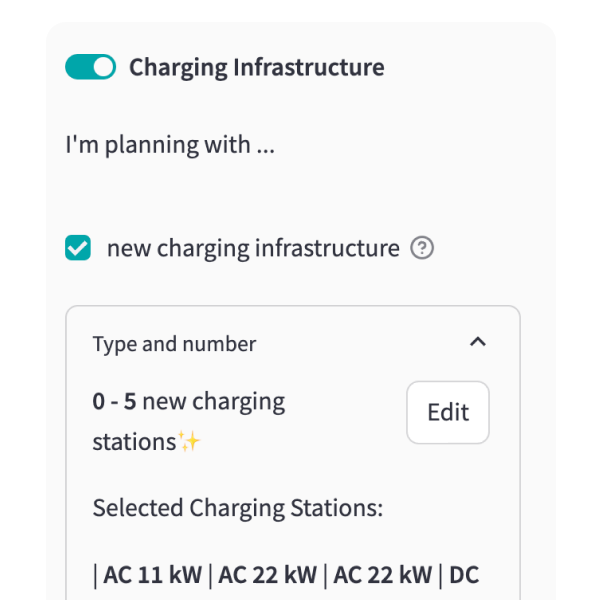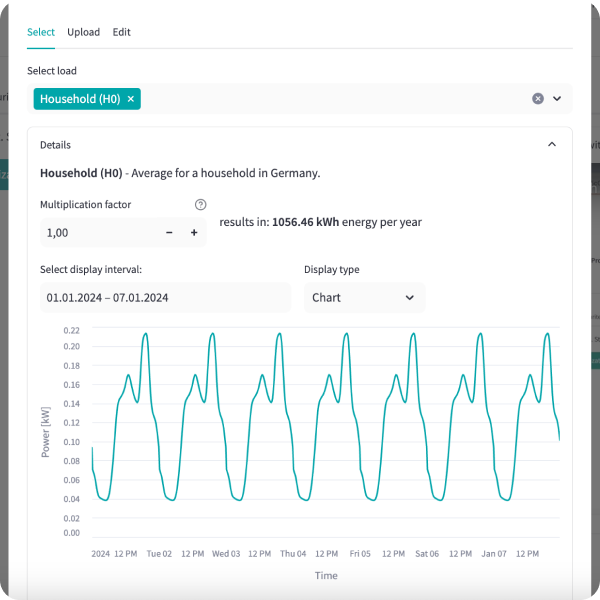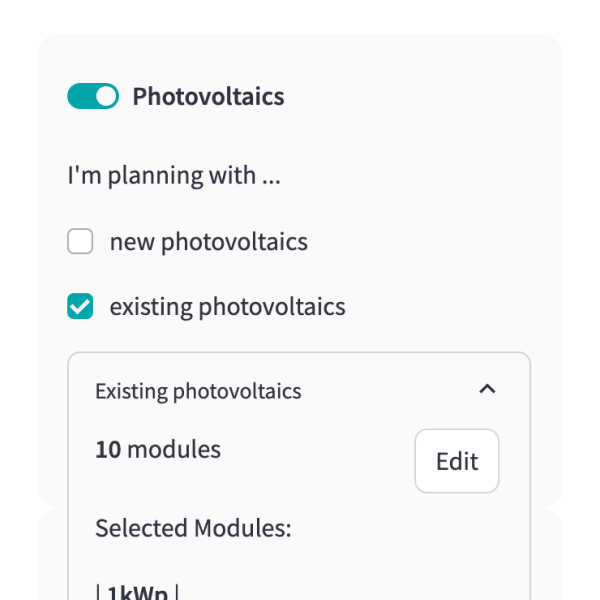Charging Infrastructure
elbwire for Charging Infrastructure Operators
Efficient Planning and Optimization of Your Charging Infrastructure for Maximum Profitability
Efficient Planning and Optimization of Your Charging Infrastructure for Maximum Profitability
Charging infrastructure operators face the challenge of efficiently designing their networks while meeting the growing demands of electromobility. Selecting the right number and type of charging stations, in line with optimized financial and technical planning, is crucial for making investments profitable. elbwire provides a comprehensive solution that helps you consider all relevant factors—from site planning to cost optimization.
elbwire enables operators to determine the optimal number and type of charging stations for their locations. The app takes into account factors such as charging times, user profiles, and local conditions to find the best solution for your infrastructure.
With elbwire, you can precisely plan and optimize capital expenditures (CAPEX) and operational expenditures (OPEX). You receive an accurate calculation of the business case and return on investment (ROI) based on the specific technical and financial parameters of your project.
Define the potentials of efficient charging processes, reduced energy consumption peaks, and optimized energy costs through load management integration.
With elbwire, you can individually plan the number and type of charging stations. The app allows you to simulate various charging scenarios and find the best solution for your infrastructure—including detailed cost analyses.
With elbwire, you can analyze the total operating costs of your charging infrastructure in detail. The app provides comprehensive calculations of capital and operating expenses, helping you find the most economical solution.
For operators considering solar energy, elbwire offers the option to integrate photovoltaic (PV) systems into your charging infrastructure. The app calculates the optimal use of PV modules to reduce operating costs and maximize profitability.



Lena Lade, a project manager of a city charging infrastructure provider, was tasked with expanding her growing network of charging stations to accommodate the increasing number of electric vehicles in the city. However, this expansion came with several challenges. Lena needed to ensure that the investment remained cost-effective, particularly in light of rising energy prices and fluctuating demand. She was also dealing with the inefficiency of her existing network, where peak usage times caused congestion and underutilized some stations during off-peak hours. Additionally, she wanted to future-proof the infrastructure by incorporating renewable energy solutions, such as solar power, to further reduce operating costs and environmental impact. Her goal was to create a balanced network of fast and regular chargers that met the diverse needs of users, from fleet operators to individual EV owners, without overextending her budget.
After evaluating several options, Lena turned to the elbwire app to solve her planning and optimization challenges. The decision was driven by elbwire’s ability to provide detailed simulations of various charging station configurations. “What convinced me was the flexibility and accuracy of the simulations,” Lena explains. “elbwire allowed me to model different scenarios, from the placement of stations to the type of chargers needed, whether AC or DC fast chargers. It also factored in local energy prices and usage patterns, giving me a clear understanding of the cost implications for each scenario.” The ability to plan for future solar energy integration also made elbwire stand out, as it aligned with Lena’s long-term sustainability goals.
With the help of elbwire, Lena began to systematically plan and optimize the expansion of her charging network. She used the app to run simulations based on real-world data, including current energy consumption, peak usage times, and anticipated growth in EV adoption. “The app helped us find the right balance between fast DC chargers and more affordable AC chargers,” she says. Fast DC chargers were positioned in high-traffic areas to meet the needs of commercial fleets and time-sensitive users, while slower AC chargers were installed in residential and public parking areas where longer charging times were acceptable. The app also enabled her to plan the integration of photovoltaic (PV) systems into the network, leveraging solar energy to offset a portion of the electricity demand. Furthermore, by optimizing the load management system, Lena was able to minimize the risk of power surges during peak periods, which not only lowered energy costs but also extended the life of the infrastructure.
Today, Lena operates one of the most efficient charging infrastructures in the region, thanks to elbwire’s comprehensive planning tools. By optimizing her network, Lena managed to reduce operational inefficiencies by 20%, and her load management strategies have cut peak energy costs by 15%. “Thanks to elbwire, we were able to not only reduce our costs but also maximize ROI,” Lena says. The integration of solar energy has further decreased the overall energy expenditures, making her network more sustainable. Additionally, elbwire’s flexibility has given Lena the ability to scale her infrastructure in line with growing EV demand. As the city anticipates an increase in electric vehicle adoption, Lena is confident that her charging stations are prepared to meet future needs without incurring unnecessary costs. “We are now optimally prepared for the future and can flexibly respond to the growing demand,” she concludes.